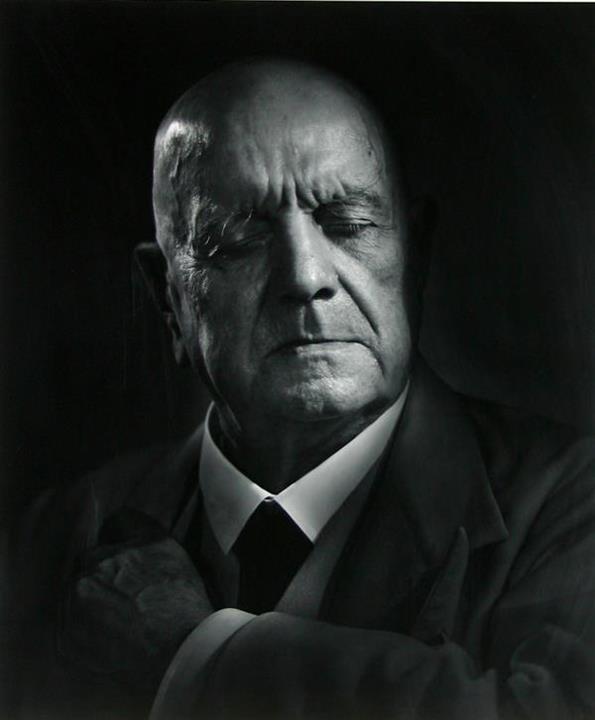I’ve played the Blue Suit Records compilation of Louie Bluie’s country blues about twenty times since I got it. Armstrong had an appealing personality, and was a far cry from the tragic and self-destructive fellows that fill blues history. Multi-talented, able to speak several languages and to engage audiences as a raconteur, he died at the age of 95, respected and comfortable though not rich. Between the two world wars, he played with Sleepy John Estes and Big Bill Broonzy, among many. His cheerful style on fiddle, mandolin and guitar, often accompanied by brilliantly-told personal anecdotes, distinguished him from the surlier, less articulate personas that dominated country blues. After serving in WWII, he worked for twenty-five years in a Detroit auto plant, then started to perform and tour extensively when public interest in old blues revived. Check out, if you can, his unusual and delightful fiddle version of Gershwin’s “Summertime”, which segues elegantly into a beautiful rendition of the old hymn “When He Calls Me, I Will Answer.”
Category Archives: CK - Listening 2011 - Page 2
First-time listening for April, 2011
22737. (Jimmy Rogers) That’s All Right [The Blues Collection #54]
22738. (The Verve) A Storm In Heaven
22739. (Kishori Amonkar) Samarpan ― The Joy of Surrender Read more »
Weber & Mahler’s Die drei Pintos
This seldom-performed comic opera is a bit of a oddity. It remained unfinished by Carl Maria von Weber at his death, and was “completed” by a young Gustav Mahler (before even his first symphony, when he had only achieved success as a conductor). The “completion” involved scoring the bulk of the opera, for Weber had left only a jumble of sketches, which Mahler had to “decode”, orchestrate, and supplement with complete new numbers. The plot is pure sitcom ― funny drunk scenes, mistaken identity, everything resolved at a wedding. Since half a century separates Weber’s death from Mahler’s reconstruction, the opera has an odd sense of belonging in no time period. In that half century, opera, and indeed all music, had mutated so much that one can normally distinguish something from Weber’s time from Mahler’s without having heard it before, but Die drei Pintos would keep you guessing. I’ll have to say, however, that while Mahler’s orchestration gives hints of many features of his later symphonies, making the piece superficially more “modern”, it’s Weber’s original melodies that give the work its charm, and they are firmly anchored in his own time. The recording I have, a Naxos issue of a live performance (you can hear thudding on the floor-boards), features Gunnar Gudbjörnsson, Alessandro Svab, Barbara Zechmeister, and was conducted by Paolo Arrivabeni. The “pintos” referred to are the main character, Don Pinto, and two people impersonating him… not three horses or three beans.
First-time listening for March, 2011
22687. (Count Basie) Count Basie [Verve Jazz Masters #2]
22688. (Steely Dan) The Nightfly
22689. (Snailhouse) Lies On The Prize
22690. (Smiths) Louder Than Bombs Read more »
First-time listening for February, 2011
(Capilla Flamenca) The A‑La-Mi-Re Manuscripts:
. . . 22662. (Matthias Gascogne) Missa Myn hert: Kyrie
. . . 22663. (Jean Mouton) Celeste beneficium Read more »
First-time listening for January, 2011
22648. (Audioslave) Revelations
22649. (Rolling Stones) 12 X 5
22650. (Piirpauke) Piirpauke 2 Read more »
Image of the month: Jean Sibelius
Jean Sibelius has remained my favourite composer throughout my life. Something in his work touches me directly. One of my greatest pleasures was to attend the unique concert series in which all his symphonies were performed (for the first time) in sequence, under the direction of the young and brilliant conductor Thomas Dausgaard. When I told him, during the post-performance reception, that it was the best performance of the 4th symphony (my favourite) I had ever heard, he replied that it was his favourite as well.. giving much the same reasons I would have. It is the most difficult, and perhaps the least played of the seven symphonies.… dark, ambiguous, complex, and intriguing.
This photograph is by Jousuf Karsh, the Canadian portrait photographer who made iconic images of Winston Churchill, Ernest Hemmingway, and many others. Karsh remembered details of the sitting:
“I arrived at Sibelius’s home ‘Ainola,’ named for his wife Aino, laden with gifts from his admirers — an inscribed manuscript from composer Ralph Vaughan Williams, a warm letter from Olin Downes, the celebrated music critic of the New York Times, a box of his favorite cigars and a bottle of old cognac from the Canadian High Commissioner in London. This last we shared with little Finnish cookies and coffee. His daughter interpreted for the straight-backed patriarch of eighty-four, although there was such a meeting of minds that words became scarcely necessary. The structure of his face reminded me of carved granite, yet with infinite warmth and humanity. This photograph was one of the last taken. He was visibly moved as I told him how the Finnish workers, in their northern Canadian logging camps, doubled their wartime output when his Finlandia was played for them.”
The links go to related articles on this blog. Some others:
The Kalevala, is the Finnish epic that inspired much of Sibelius’ music. A youthful work of his, Kullervo Op.7, is a choral-orchestral telling of part of the epic. I also discuss it here. En Saga, Op.9 is another. I have also written blog items about his string quartets, and his first symphony.
